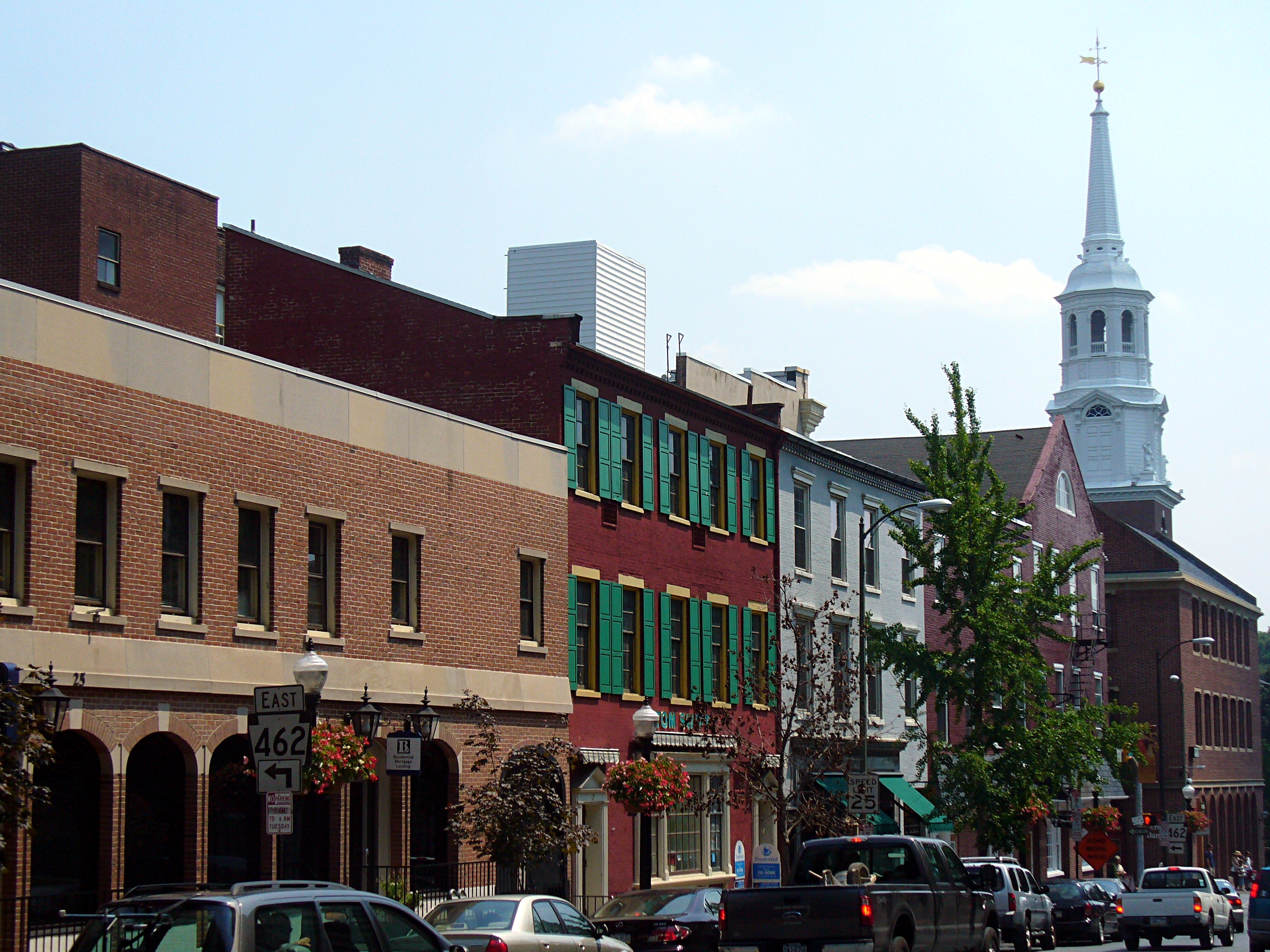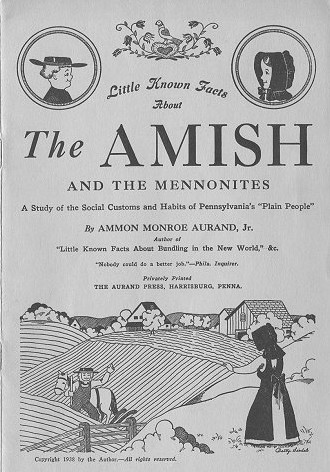|
Central Market (Lancaster)
Central Market, also known as Lancaster Central Market, is a historic public market located in Penn Square, in downtown Lancaster, Pennsylvania. Until 2005, the market was the oldest municipally-operated market in the United States. The Central Market comprises approximately 60 vendors who principally sell foodstuffs – fresh fruits and produce, meats, cheeses, fish and seafood and baked goods – and flowers. Products for sale come from Amish, Pennsylvania Dutch, German, Greek, Caribbean, Middle Eastern, and Slavic origins. History A public marketplace was deeded on this site in 1730 as part of the settlement of Lancaster. The marketplace was officially chartered by King George II on May 1, 1742, officially designating Lancaster as a market town. The Central Market occupies a portion of the original marketplace, with the first permanent building erected in 1757. This 20,540 square-foot brick building sits adjacent to the old City Hall, Lancaster's very first skyscra ... [...More Info...] [...Related Items...] OR: [Wikipedia] [Google] [Baidu] |
Lancaster, Pennsylvania
Lancaster, ( ; pdc, Lengeschder) is a city in and the county seat of Lancaster County, Pennsylvania. It is one of the oldest inland cities in the United States. With a population at the 2020 census of 58,039, it ranks 11th in population among Pennsylvania's municipalities. The Lancaster metropolitan area population is 507,766, making it the 104th-largest metropolitan area in the U.S. and second-largest in the South Central Pennsylvania area. The city's primary industries include healthcare, tourism, public administration, manufacturing, and both professional and semi-professional services. Lancaster is a hub of Pennsylvania's Dutch Country. Lancaster is located southwest of Allentown and west of Philadelphia. History Originally called Hickory Town, the city was renamed after the English city of Lancaster by native John Wright. Its symbol, the red rose, is from the House of Lancaster. Lancaster was part of the 1681 Penn's Woods Charter of William Penn, and was laid ... [...More Info...] [...Related Items...] OR: [Wikipedia] [Google] [Baidu] |
National Register Of Historic Places
The National Register of Historic Places (NRHP) is the United States federal government's official list of districts, sites, buildings, structures and objects deemed worthy of preservation for their historical significance or "great artistic value". A property listed in the National Register, or located within a National Register Historic District, may qualify for tax incentives derived from the total value of expenses incurred in preserving the property. The passage of the National Historic Preservation Act (NHPA) in 1966 established the National Register and the process for adding properties to it. Of the more than one and a half million properties on the National Register, 95,000 are listed individually. The remainder are contributing resources within historic districts. For most of its history, the National Register has been administered by the National Park Service (NPS), an agency within the U.S. Department of the Interior. Its goals are to help property owners and inte ... [...More Info...] [...Related Items...] OR: [Wikipedia] [Google] [Baidu] |
Tourist Attractions In Lancaster, Pennsylvania
Tourism is travel for pleasure or business; also the theory and practice of touring (other), touring, the business of attracting, accommodating, and entertaining tourists, and the business of operating tour (other), tours. The World Tourism Organization defines tourism more generally, in terms which go "beyond the common perception of tourism as being limited to holiday activity only", as people "travelling to and staying in places outside their usual environment for not more than one consecutive year for leisure and not less than 24 hours, business and other purposes". Tourism can be Domestic tourism, domestic (within the traveller's own country) or International tourism, international, and international tourism has both incoming and outgoing implications on a country's balance of payments. Tourism numbers declined as a result of a strong economic slowdown (the late-2000s recession) between the second half of 2008 and the end of 2009, and in consequence of t ... [...More Info...] [...Related Items...] OR: [Wikipedia] [Google] [Baidu] |
Buildings And Structures In Lancaster, Pennsylvania
A building, or edifice, is an enclosed structure with a roof and walls standing more or less permanently in one place, such as a house or factory (although there's also portable buildings). Buildings come in a variety of sizes, shapes, and functions, and have been adapted throughout history for a wide number of factors, from building materials available, to weather conditions, land prices, ground conditions, specific uses, prestige, and aesthetic reasons. To better understand the term ''building'' compare the list of nonbuilding structures. Buildings serve several societal needs – primarily as shelter from weather, security, living space, privacy, to store belongings, and to comfortably live and work. A building as a shelter represents a physical division of the human habitat (a place of comfort and safety) and the ''outside'' (a place that at times may be harsh and harmful). Ever since the first cave paintings, buildings have also become objects or canvasses of much artistic ... [...More Info...] [...Related Items...] OR: [Wikipedia] [Google] [Baidu] |
Romanesque Revival Architecture In Pennsylvania
Romanesque may refer to: In art and architecture *First Romanesque, or Lombard Romanesque architectural style *Pre-Romanesque art and architecture, a term used for the early phase of the style *Romanesque architecture, architecture of Europe which emerged in the late 10th century and lasted to the 13th century **Romanesque secular and domestic architecture **Brick Romanesque, North Germany and Baltic **Norman architecture, the traditional term for the style in English ** Spanish Romanesque ** Romanesque architecture in France *Romanesque art, the art of Western Europe from approximately AD 1000 to the 13th century or later *Romanesque Revival architecture, an architectural style which started in the mid-19th century, inspired by the original Romanesque architecture **Richardsonian Romanesque, a style of Romanesque Revival architecture named for an American architect Other uses * ''Romanesque'' (EP), EP by Japanese rock band Buck-Tick * "Romanesque" (song), a 2007 single by ... [...More Info...] [...Related Items...] OR: [Wikipedia] [Google] [Baidu] |
Commercial Buildings On The National Register Of Historic Places In Pennsylvania
Commercial may refer to: * a dose of advertising conveyed through media (such as - for example - radio or television) ** Radio advertisement ** Television advertisement * (adjective for:) commerce, a system of voluntary exchange of products and services ** (adjective for:) trade, the trading of something of economic value such as goods, services, information or money * Two functional constituencies in elections for the Legislative Council of Hong Kong: **Commercial (First) **Commercial (Second) * ''Commercial'' (album), a 2009 album by Los Amigos Invisibles * Commercial broadcasting * Commercial style or early Chicago school, an American architectural style * Commercial Drive, Vancouver, a road in Vancouver, British Columbia, Canada * Commercial Township, New Jersey, in Cumberland County, New Jersey See also * * Comercial (other), Spanish and Portuguese word for the same thing * Commercialism Commercialism is the application of both manufacturing and consumption towar ... [...More Info...] [...Related Items...] OR: [Wikipedia] [Google] [Baidu] |
American Planning Association
The American Planning Association (APA) is a professional organization representing the field of urban planning in the United States. APA was formed in 1978, when two separate professional planning organizations, the American Institute of Planners and the American Society of Planning Officials, were merged into a single organization. The American Institute of Certified Planners is now the organization's professional branch. Functions Like many professional organizations, the American Planning Association's main function is to serve as a forum for the exchange of ideas between people who work in the field of urban planning. The organization keeps track of the various improvement efforts underway around the country, which may include the improvement or construction of new parks, highways and roads, or residential developments. The organization is also a starting point for people looking for employment. The association also publishes the ''Journal of the American Planning Asso ... [...More Info...] [...Related Items...] OR: [Wikipedia] [Google] [Baidu] |
Public Place
A public space is a place that is open and accessible to the general public. Roads (including the pavement), public squares, parks, and beaches are typically considered public space. To a limited extent, government buildings which are open to the public, such as public libraries, are public spaces, although they tend to have restricted areas and greater limits upon use. Although not considered public space, privately owned buildings or property visible from sidewalks and public thoroughfares may affect the public visual landscape, for example, by outdoor advertising. Recently, the concept of shared space has been advanced to enhance the experience of pedestrians in public space jointly used by automobiles and other vehicles. Public space has also become something of a touchstone for critical theory in relation to philosophy, urban geography, visual art, cultural studies, social studies and urban design. The term 'public space' is also often misconstrued to mean other things su ... [...More Info...] [...Related Items...] OR: [Wikipedia] [Google] [Baidu] |
National Geographic Traveler
''National Geographic Traveler'' is a magazine published by NG Media in Armenia, Belgium, the Netherlands, China, Croatia, the Czech Republic, Germany, Greece, Indonesia, Latin America, Israel, Poland, Romania, Slovenia, Spain and the UK. The US edition was published from 1984 to 2019. History ''National Geographic Traveler'' was launched as a quarterly publication in the Spring of 1984 by the National Geographic Society under the leadership of president Gilbert M Grosvenor. Vice president for publications, Robert L. Breeden oversaw the launch. Joan Tapper was the first editor. The final US print edition appeared in December, 2019 with George Stone as editor. In its 35-year run, the US print edition had six editors: * Joan Tapper, 1984-1989 * Richard Busch, 1988-1998 * Keith Bellows, 1998-2015 * ''Norie Quintos, Acting Editor'', 2015 * Maggie Zackowitz, 2015-2016 * George Stone, 2016-2019 In September 2013, the National Geographic Society formed National Geographic Travel ... [...More Info...] [...Related Items...] OR: [Wikipedia] [Google] [Baidu] |
Bird-in-Hand, Pennsylvania
Bird-in-Hand is an unincorporated community and census-designated place (CDP) in Lancaster County, Pennsylvania, United States, in East Lampeter Township. The "Bird in Hand" ZIP code extends east from the CDP into Leacock and Upper Leacock townships. The community has a large Amish and Mennonite population. As of the 2010 census, the population within the CDP was 402. History The area's first inhabitants were Native American Shawnee and Susquehannock people.''Bird-in-Hand History'' at amishnews.com The earliest European settlers of what was to become Bird-in-Hand were Quakers and Swiss Mennonites. James Smith was the first of the Quakers known to have settled in the area, arriving by the year 1715. William and Dorothy McNabb were pioneer landowners and the owners of the original Bird-in-Hand Hotel. The Quakers built a meetinghouse and two-story academy, which stands today, next to the present day Bird-in-Hand fire company. The community was founded in 1734. The legend o ... [...More Info...] [...Related Items...] OR: [Wikipedia] [Google] [Baidu] |
Amish Cuisine
The Amish (; pdc, Amisch; german: link=no, Amische), formally the Old Order Amish, are a group of traditionalist Anabaptist Christian church fellowships with Swiss German and Alsatian origins. They are closely related to Mennonite churches, another Anabaptist denomination. The Amish are known for simple living, plain dress, Christian pacifism, and slowness to adopt many conveniences of modern technology, with a view neither to interrupt family time, nor replace face-to-face conversations whenever possible, and a view to maintain self-sufficiency. The Amish value rural life, manual labor, humility and '' Gelassenheit'' (submission to God's will). The history of the Amish church began with a schism in Switzerland within a group of Swiss and Alsatian Mennonite Anabaptists in 1693 led by Jakob Ammann. Those who followed Ammann became known as Amish. In the second half of the 19th century, the Amish divided into Old Order Amish and Amish Mennonites; the latter do not abstai ... [...More Info...] [...Related Items...] OR: [Wikipedia] [Google] [Baidu] |






